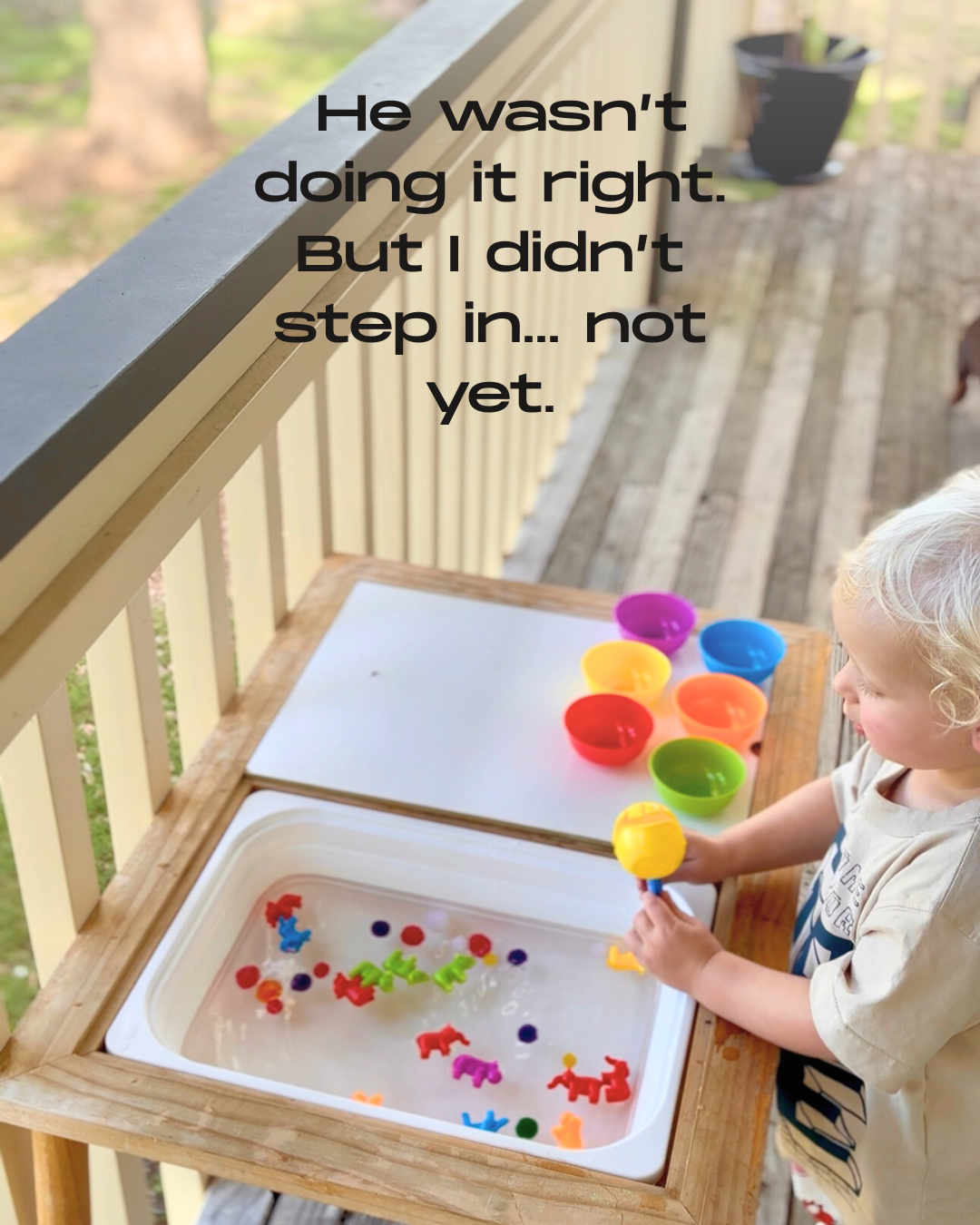
🧠 The Power of Scaffolding: Why Stepping Back Can Be Just as Powerful as Stepping In
Share
By Madi | Early Childhood Educator & Founder, Happy Hands Messy Play Co

We’ve all been there. Watching a child explore a new task—fascinated but fumbling.
That little voice creeps in: “He’s not doing it right... I’ll just show him.”
But in that tiny pause—before I stepped in—something powerful was happening.
This is scaffolding.
Not taking over.
Not sitting back endlessly either.
It’s intentional support, offered just when it’s needed most—and held back when it’s not.
🧩 What is Scaffolding in Early Childhood?
Scaffolding is a teaching strategy where the adult supports a child just enough to help them reach a new level of understanding, before gradually pulling back to promote independence.
It comes from Vygotsky’s Zone of Proximal Development (ZPD), which describes the space between what a child can do on their own and what they can do with support.
In practice, scaffolding might look like:
-
Modelling a technique (“Watch how I scoop it into the bowl…”)
-
Asking guiding questions (“What colour is this one?”)
-
Using prompts or hints, rather than direct answers
-
Pausing to give the child time to think

🎓 EYLF Links for Educators
Scaffolding is embedded throughout the Early Years Learning Framework (V2.0). You’ll find it particularly reflected in:
➤ Outcome 4: Children are confident and involved learners
-
4.1 Children develop dispositions for learning such as curiosity, cooperation, confidence, creativity, commitment, enthusiasm, persistence, imagination and reflexivity.
-
4.2 Children develop a range of skills and processes such as problem-solving, inquiry, experimentation, hypothesising, researching and investigating.
➤ Outcome 5: Children are effective communicators
-
5.1 Children interact verbally and non-verbally with others for a range of purposes
-
5.2 Children engage with a range of texts and gain meaning from these texts
Scaffolding supports these outcomes by encouraging language development, active engagement, and higher-order thinking.
📘 Resource: EYLF V2.0 (ACECQA)
🏡 Scaffolding at Home: Tips for Parents
You don’t need to be an educator to scaffold. Everyday moments are full of opportunities to support your child’s learning—without taking over.
👇 Try this:
-
Observe before acting – let them explore first
-
Use language to prompt thinking – “Where could that go?” or “What do you think will happen?”
-
Model and then pass it back – do one together, then hand them the tool
-
Step away once they’re engaged – independence is where the learning sinks in
💬 Remember: Scaffolding isn’t about perfection. It’s about presence, patience, and the power of pausing.

🧠 Why Stepping Back Matters Too
After scaffolding comes release—the space for the child to try, fail, adjust, and learn.
That’s where:
-
Problem-solving is developed
-
Cognitive pathways are strengthened
-
Self-efficacy and resilience begin to grow
This aligns closely with Jean Piaget’s theory of constructivism, which states that children build knowledge through hands-on experiences and discovery.
Learn More: Jean Piaget's Constructivist Theory
Next time you feel the urge to jump in, try pausing first.
Watch.
Offer support only where it’s truly needed.
Then step back—and trust the process.
Because whether you’re a parent or an educator, you’re not just guiding play—you’re shaping how children learn to learn.
📥 Want More Like This?
I share real moments like this weekly—blending lived parenting experiences with early childhood education best practice.
📩 Join the email list to get new posts and play ideas straight to your inbox.
